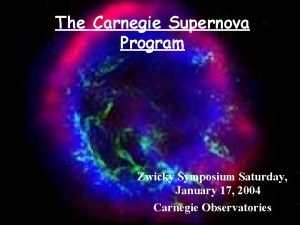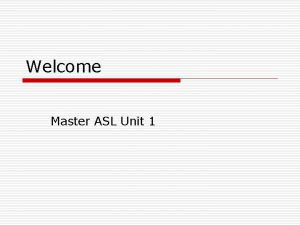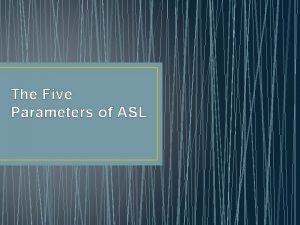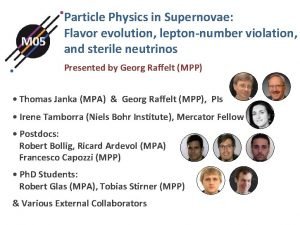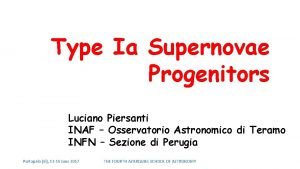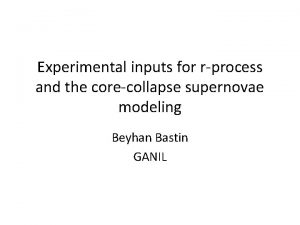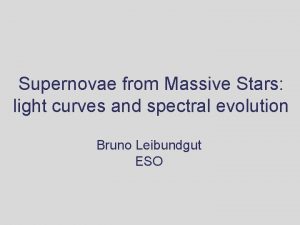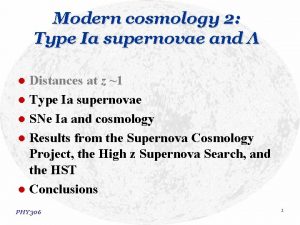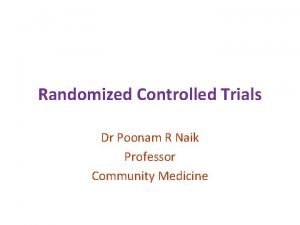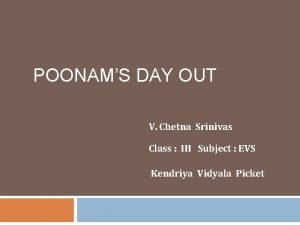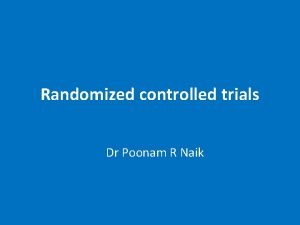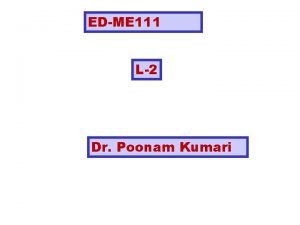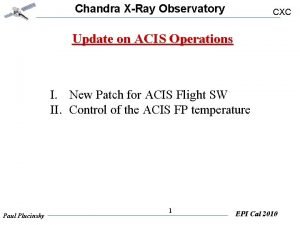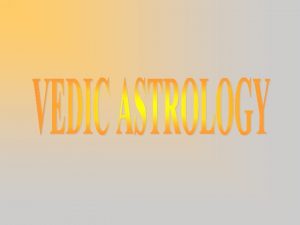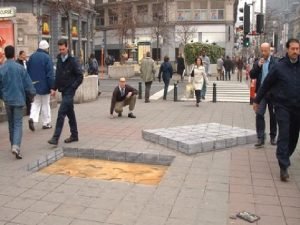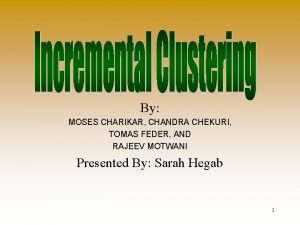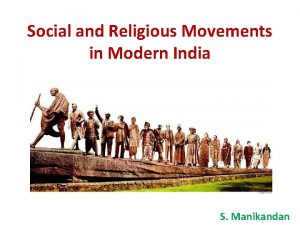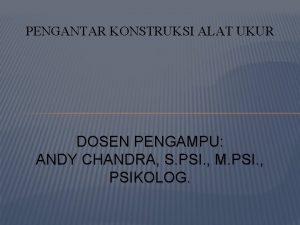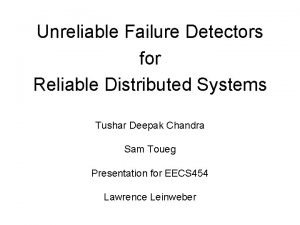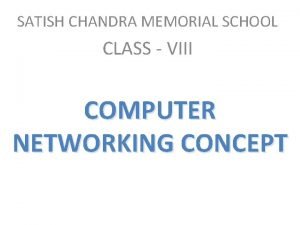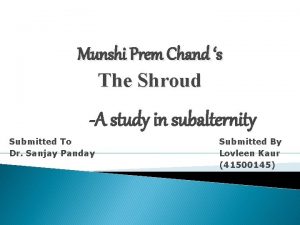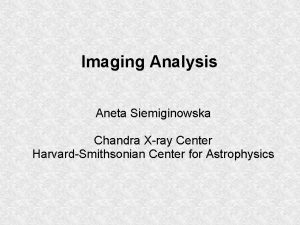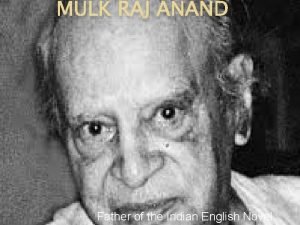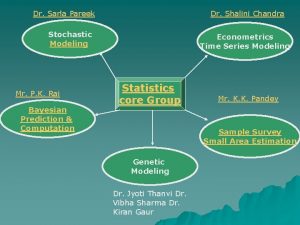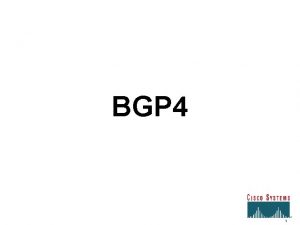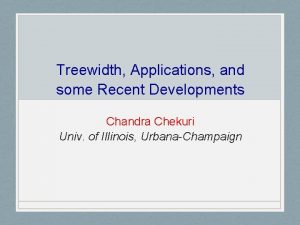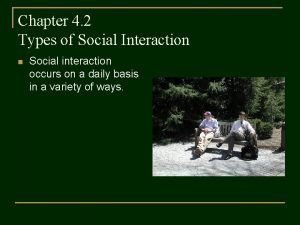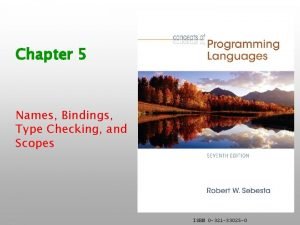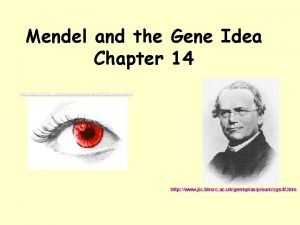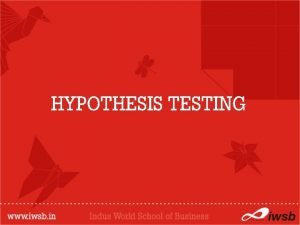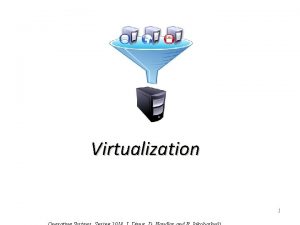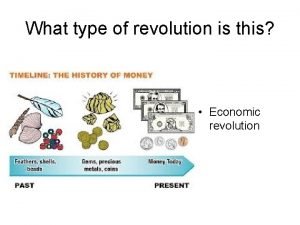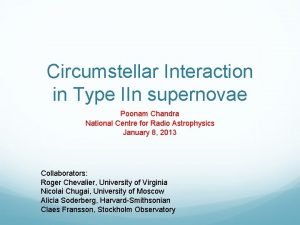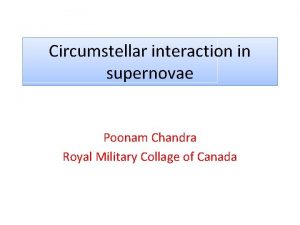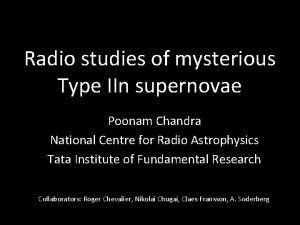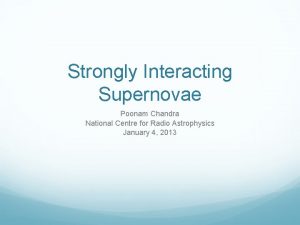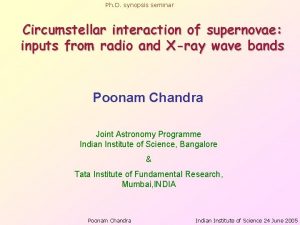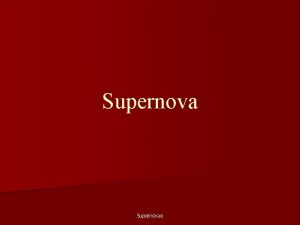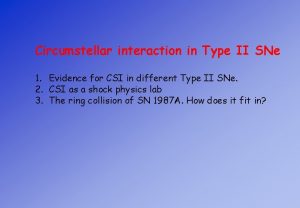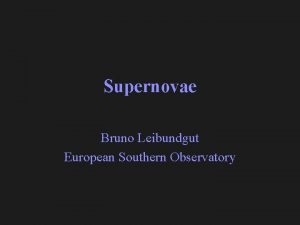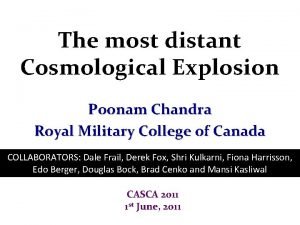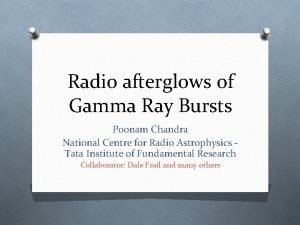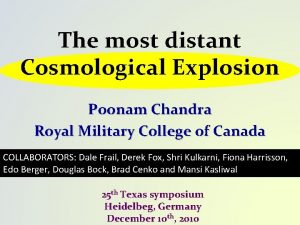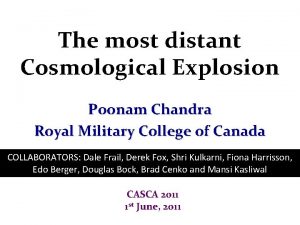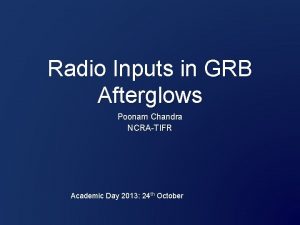Circumstellar Interaction in Type IIn supernovae Poonam Chandra































































- Slides: 63

Circumstellar Interaction in Type IIn supernovae Poonam Chandra National Centre for Radio Astrophysics January 8, 2013 Collaborators: Roger Chevalier, University of Virginia Nicolai Chugai, University of Moscow Alicia Soderberg, Harvard-Smithsonian Claes Fransson, Stockholm Observatory

Type IIn Supernovae Suggested by Schlegel 1990. Unusual optical characteristics: Very high bolometric and Ha luminosities Ha emission, a narrow peak sitting atop of broad emission Slow evolution and blue spectral continuum Late infrared excess Indicative of dense circumstellar medium.

Circumstellar interaction Explosion center Circumst ellar medium density ~1/r 2 Circumstellar wind (1 E-5 Msun/Yr) Forward Shock ~10, 000 km/s Reverse Shock ~1000 km/s Ejecta

SN IIn Statistics Around ~180 Type IIn supernovae (81 observed) Only 10 discovered in Radio (SNe 1986 J, 1988 Z, 1995 N, 1997 eg, 1978 K, 1998 S, 2005 kd, 2006 jd, 2008 iy, 2009 ip). Only 12 discovered in X-rays (SNe 1986 J, 1988 Z, 1995 N, 1998 S, 1978 K, 2002 hi, 2005 kd, 2005 ip, 2006 jd, 2008 iy, 2010 jl and 2009 ip)

Peak radio and X-ray luminosities 2009 ip

Type IIn supernovae Very diverse stellar evolution and mass loss history. SN 1988 z, extremely bright even after 20 years SN 1994 w faded only in 130 days. SN 2005 gl: LBV progenitor? SN 2006 gy, extremely bright: PISN progenitor? SN 2002 ic, SN 2005 gj: Hybrid between Ia/IIN. SNe 2001 em, 1995 N, 2008 fz: Type Ib/c properties SN 2009 ip: episodic ejections before turning into true supernova

Multiwaveband campaign to understand Type IIn supernovae Chandra, Soderberg, Chevalier, Fransson, Chugai

Karl G. Jansky Very Large Array RADIO TELESCOPES Giant Metrewave Radio Telescope

X-ray telescopes XMM Swift

VLA observations of Type IIn supernovae SN 2005 kd 2006 jd 2008 iy 2009 ip 2010 jl 2007 gy 2007 nx 2007 pk 2007 rt 2008 B 2008 J 2008 S 2008 X 2008 aj 2008 am 2008 be 2008 bk 2008 bm 2008 cg 2008 cu 2008 en 2008 es 2008 gm Poonam Chandra 2008 ip Days 640 -1173 404 -1030 300 -1300 30 -90 30 -1000 72 -418 22 -372 2 -342 49 -329 21 254 -336 8 -308 12 6 -300 40 -337 27 -268 4 -13 252 39 -222 156 132 130 52 5 -124 Detection Y Y N N N N N Distance 64 79 ATel 1182 1297 24 50 71 96 78 66 5. 6 27 108 123 4 152 160 50 65 1271 1359 1366 1382 1410 1409 1408 1470 1452, 55, 65 1865, 69 1594 1776 1891

SN IIn Radio Statistics Around ~180 Type IIn supernovae So far only 81 observed in radio bands 43 SN IIn observed by us in radio Out of 81, only 10 detected in radio bands 4 detected by us (SN 2005 kd, 2006 jd, 2008 iy, 2009 ip) In X-rays detected by us: SN 2006 jd, 2010 jl, 2009 ip

Poonam Chandra

SN 2006 jd Discovered October 12, 2006 in UGC 4179 Redshift z=0. 0186 Initial spectrum shows Type IIb and later spectrum shows IIn Radio Observations: VLA(EVLA), GMRT X-ray Observations: Swift-XRT, Chandra. XO, XMMNewton

SN 2006 jd- radio observations With VLA starting from 2007, Nov 21. 28 UT Epoch: Day 400 until Day 2000. Frequency bands: 22. 5 (K), 8. 5 (X), 4. 9 (C) and 1. 4 (L) GHz bands With GMRT at three epochs, between 1104 day to 1290 days. Frequency bands: 1. 4 GHz and 0. 61 GHz bands. Not detected yet in 0. 61 GHz bands. Chandra et al. Ap. J 2012, 755, 110

SN 2006 jd X-ray observations XMM observation on Apr 7, 2009 for 41 ks. Total of 1963 counts (6. 19 E-2 cps). Chandra observations on Sep 14, 2009 for 37 ks. Total of 888 counts (2. 38 E-2 cps). Swift observations between Nov 2007 and March 2011 at 18 occasions. All data fit by high temperatures.

Chandra et al. Ap. J 2012, 755, 110 Radio light curves

Radio Spectral Evolution a=-1. 04 Chandra et al. Ap. J 2012, 755, 110

Chandra et al. Ap. J 2012, 755, 110 Radio Spectra

Frequency

Synchrotron self absorption indicates ejecta speed ~2000 -3000 km/s. Too small. Free-free absorption likely to dominate. Chevalier & Fransson 2003

Radio Absorption Models External free-free absorption

Radio light curves S=1. 6, m>1

Radio Spectra

Radio Absorption Models Internal free-free absorption Weiler et. Al. 1990 proposed for SN 1986 J, that thermal absorbing material is mixed in with the non-thermal emission. Later applied for SN 1988 Z too. F(n)~n 2. 1+a

Radio light curves S=1. 6, m=0. 9

Radio Spectra F(n)~n 2. 1+a

Radio Spectral Evolution a=-1. 04 Chandra et al. Ap. J 2012, 755, 110

Mass of the cool gas mixed in the nonthermal emitting region Assuming that absorbing gas is in pressure equilibrium with surrounding hot X-ray emitting gas. Temperature of absorbing gas ~104 -105 K and X-ray emitting gas 60 ke. V. Then mass of the absorbing cool gas is: Ma=2 x 10 -8 T 45/2 Msun. Modest amount of cool gas mixed into radio emitting region can do the required absorption. Source of the cool gas is radiative cooling of the dense gas in the shocked region.

SN 2006 jd-XMM spectra

SN 2006 jd-Chandra spectra

SN 2006 jd X-rays Best fit with T=60 -80 ke. V, forward shock origin NH=1. 3 x 1021 cm-2 (Galactic 4. 5 x 1020 cm-2) Detection of 6. 9 ke. V Fe XXVI line (EW=1. 4 ke. V). Possible detection of 8. 1 ke. V Ni XXVIII line

SN 2006 jd X-rays Nonthermal model gives very flat powerlaw and predicts F~n-0. 2 5 Msun Mekal fits the data well and reproduces Fe line. NEI model also fits data well but reproduces very low density ~7 E-3 cm-3. X-ray also gives s=1. 7 (consistent with radio). Density 3 E 6 cm-3

SN 2006 jd- X-ray light curves -0. 24=2 m(s-1)-1, s=1. 7

SN 2006 jd: Main Results Radio and X-ray both give s~1. 6 -1. 7 (density~1/rs). Mass loss rate ~ 5 x 10 -3 Msun/yr (assuming 100 km/s wind speed). Shocked gas density 3 x 106 cm-3. X-ray emission well fit with single temperature model, X-ray coming from forward shocked shell. No indication of reverse shock emission RS moved back to centre and weakened. RS is a cooking shock and the cool shell absorbing this.

SN 2006 jd: Main Results Column density is a factor 50 smaller (1. 3 E 21) than needed to produce the X-ray luminosity (4 E 22). Clumps can give high luminosity but increase shock speed and predict higher temperature of X-ray emission. Global asymmetry with low column density along line of sight and dense interaction over rest of the solid angle. This scenario suggested for SN 1988 z too (Chugai & Danziger 1994). Large asymmetries seen in polarization observations of Sne 1998 S, 2010 jl and 1997 eg too.

SN 2006 jd: Main Results The radio optical depth is consistent with the observations and observed radio luminosity and reproduces optical depth of unity around day 1000. But Lower column density derives external FFA optical depth is ~8 E-4 at 5 GHz on day 1000. Thus this also works against external FFA model.

SN 2006 jd: Main Results EW of Fe line (1. 4 ke. V) much higher than expected (0. 1 ke. V) under collisional equilibrium model. NEI gives very low density ~1 E 3 cm-3. Possible region is mixing of cool gas could enhance the width of the line.

SN 2010 jl Discovered on 2010 Nov 3. 5 UT in UGC 5189 A (z=0. 011) Discovered magnitude 13. 5. Brightened to 12. 9. One of the brightest apparent magnitude. (Absolute visual magnitude Mv=-20) Archival HST image show progenitor star >30 Msun. Low metallicity host galaxy, Z~0. 3 Msun, supporting the trend that luminous SNe occur in low metallicity galaxies. . Circumstellar expansion speed 40 -120 km/s, from optical spectra.

SN 2010 jl Radio Observations: EVLA : 10 observations from November 2010 until Now. No detection. X-ray observations: At 3 epochs with Chandra December 2010 October 2011 June 2012 Detection at all three epochs in X-ray bands

SN 2010 jl Chandra Observations November 2010 October 2011 June 2012 Duration 39. 6 ks 41. 0 ks 39. 5 ks Counts 468 1342 1484 Count Rate 1. 13 E-2 cts 3. 29 E-2 cts 3. 68 E-2 cts Column Density 9. 7 E 23 cm-2 2. 67 E 23 cm-2 6. 6 E 22 cm-2 Temperature >10 ke. V > 10 ke. V Chandra et al. 2012, Ap. J Letters 2012, 750, L 2

SN 2010 jl Chandra X-ray Spectra Comparison November 2010 October 2011 June 2012 Chandra et al. 2012, Ap. J Letters 2012, 750, L 2

SN 2010 jl Chandra Spectra

SN 2010 jl Chandra Spectra

SN 2010 jl Chandra Spectra

SN 2010 jl Chandra Spectra

SN 2010 jl Column density ~1024 cm-2 (1000 times higher than Galactic absorption). Consistent with decay of 1/t. High temperature ~70 -80 ke. V (>10 ke. V) High temp indicates forward shock emission High absorbing column density not accompanied by high extinction of the SN. This indicates column near forward shock, due to mass loss, where dust has been evaporated. First time X-ray absorption by external medium, that is not fully ionized by the energetic medium.

SN 2010 jl Main results Luminosity (0. 2 -10 ke. V) ~7 x 1041 erg/s, amongst most luminous X-ray supernovae. Since most emission > 10 ke. V, this is spectral luminosity Ejecta speed (v=sqrt(16 k. T/3 m) > 2700 km/s. Mass loss rate > 4 x 10 -3 Msun/year

SN 2010 jl Chandra X-ray November 2010

SN 2010 jl Chandra X-ray October 2011

SN 2010 jl Main results Fe 6. 4 ke. V (narrow k-alpha iron line) in the first epoch and not in the second epoch explains that ejecta has moved past it. The equivalent width (EW=0. 2 ke. V) consistent with that expected for this line. Low temperature component fit by powerlaw of ~1. 7 or ~1 -2 ke. V temperature and column density is that of Galactic. Luminosity ~4 x 1039 erg/s. Flux change between the two epochs is 20 -30%. Consistent with a background contaminating ULX source. Also looked at the possibility that enhanced 1 kev emission is by the CNO elements. Not possible as this gives too little absorption in 1. 5 -3 ke. V range. Origin of additional component (NH~8 E 22, k. T~1 ke. V) is not known.

Summary A systematic study of this class of objects. Understand why so few radio and X-ray emitters despite dense CSM. Late radio emission? Understanding early absorption. Understand trends in luminosity distribution. Two classes of supernovae?

Poonam Chandra

Peak radio and X-ray luminosities 2009 ip

Peak radio and X-ray luminosities 2009 ip

Collaborators Roger Chevalier, University of Virginia Nicolai Chugai, University of Moscow Alicia Soderberg, Harvard-Smithsonian Claes Fransson, Stockholm Observatory

SN 2006 jd X-rays Best fit with T=60 -80 ke. V, forward shock origin NH=1. 3 x 1021 cm-2 (Galactic 4. 5 x 1020 cm-2) Detection of 6. 9 ke. V Fe XXVI line (EW=1. 4 ke. V). Possible detection of 8. 1 ke. V Ni XXVIII line 5 Msun Mekal fits the data well and reproduces Fe line. NEI model also fits data well but reproduces very low density ~7 E-3 cm-3. X-ray also gives s=1. 7 (consistent with radio). Density 3 E 6 cm-3

Poonam Chandra

Radio Spectral Evolution

Energy scales in various explosions Chemical explosives ~10 -6 Me. V/atom Nuclear explosives ~ 1 Me. V/nucleon Novae explosions few Me. V/nucleon Thermonuclear explosions few Me. V/nucleon Core collapse supernovae 100 Me. V/nucleon

Supernova Classification (based on optical spectra and light curve) Supernovae Hydrogen No Hydrogen Type II Type I Narrow H lines Type IIn Silicon No narrow H lines Type Ia Type IIP/IIL Plateau Type IIP No Silicon Linear Type IIL Type Ib/c Helium Type Ib No Helium Type Ic

Multiwaveband campaign to understand Type IIn supernovae Chandra, Soderberg, Chevalier, Fransson, Chugai Observe most the Type IIN supernovae with the JVLA telescope (PI: Chandra). If detected in radio, follow with Swift-XRT (PI: Soderberg). Follow radio bright and/or Swift detected Type IIN supernova with Chandra. XO. Get spectroscopy, separate from nearby contamination (PI: Chandra). If bright enough, do spectroscopy with XMM-Newton (PI: Chandra). NIR photometry with PAIRITEL (PI: Soderberg). Low frequency radio follow up with the GMRT

Radio Absorption Models External free-free absorption

Radio Absorption Models External free-free absorption Internal free-absorption
 Type ia supernovae
Type ia supernovae Asl unit 1 quiz
Asl unit 1 quiz Parameters asl
Parameters asl Docuritzu zunbi iin kay adalah sebagai pengganti dari
Docuritzu zunbi iin kay adalah sebagai pengganti dari Supernovae
Supernovae Supernovae
Supernovae Supernovae
Supernovae Supernovae
Supernovae Supernovae
Supernovae Poonam motors
Poonam motors Dr poonam sinha
Dr poonam sinha Dr poonam agarwal
Dr poonam agarwal Poonam naik
Poonam naik Poonam's day out worksheet
Poonam's day out worksheet Types of randomization
Types of randomization Dr poonam kumari
Dr poonam kumari Chandra x-ray observatory acis
Chandra x-ray observatory acis Chandra asri
Chandra asri Laltu chandra
Laltu chandra Dr gopika chandra
Dr gopika chandra Julian chandra
Julian chandra Chandra o'ree age
Chandra o'ree age Jogotbondhu college
Jogotbondhu college Moses charikar
Moses charikar Reggie chandra
Reggie chandra Prathana samaj
Prathana samaj Andy chandra s.psi m.psi
Andy chandra s.psi m.psi Tushar deepak chandra
Tushar deepak chandra Kirti chandra sahu
Kirti chandra sahu Bal chandra luitel
Bal chandra luitel Purpose statement in research example
Purpose statement in research example Dharnita chandra
Dharnita chandra Borun chandra
Borun chandra Siddharth chandra
Siddharth chandra Satish chandra memorial school
Satish chandra memorial school How does budhiya die in the shroud
How does budhiya die in the shroud Chandra kavanagh
Chandra kavanagh Chandra cxc
Chandra cxc 2amd15
2amd15 Chandra kavanagh
Chandra kavanagh Chandra gonzalez uh
Chandra gonzalez uh Borun chandra
Borun chandra Okhil chandra sen
Okhil chandra sen Chandra aneta
Chandra aneta Father of indian english
Father of indian english Dr shalini chandra
Dr shalini chandra Ravi chandra cisco
Ravi chandra cisco Namas chandra
Namas chandra Tree decomposition
Tree decomposition Interaction type
Interaction type Dove
Dove 4 interaction types
4 interaction types Conversing interaction type example
Conversing interaction type example Conversing interaction type
Conversing interaction type Reference type and value type
Reference type and value type Name type compatibility and structure type compatibility
Name type compatibility and structure type compatibility A and b blood type offspring
A and b blood type offspring Latent fixation
Latent fixation Type 1 error vs type 2 error example
Type 1 error vs type 2 error example Type a
Type a Blood type and body type
Blood type and body type Test hypothesis definition
Test hypothesis definition Is hyper v type 1 or type 2
Is hyper v type 1 or type 2 Type type revolution
Type type revolution
